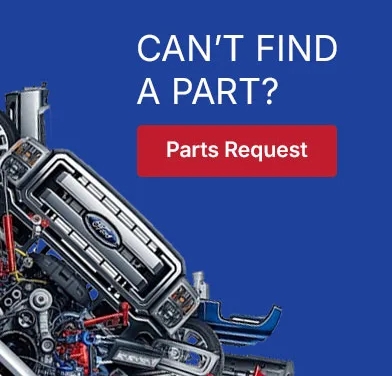No products in the cart.
7.3L Powerstroke Diesel Engine Guide (1994.5–2003) – The Legend That Built Ford’s Diesel Reputation
Introduction
Few diesel engines achieve cult status — but the 7.3L Powerstroke is one of them. Produced from 1994.5 to early 2003, it’s remembered as the gold standard of reliability in Ford’s Superduty lineup. While newer diesels boast more horsepower and torque, the 7.3L built its reputation on longevity, simplicity, and dependability. Farmers, contractors, and enthusiasts still seek them out, often paying premium prices for clean examples — even 20+ years later. This guide breaks down everything you need to know about the 7.3L Powerstroke: its history, engineering, strengths, weaknesses, maintenance, upgrade paths, and buying advice. Ultimately this article will provide you all of the information you need to review all aspects of the parts and mechanics of this engine from top to bottom.
Development History
By the early 1990s, Ford needed to replace the aging 7.3L IDI (Indirect Injection) diesel, which was reliable but lacked modern performance. The answer was a joint effort between Ford and Navistar International:
- A direct-injection design for better fuel economy and power.
- A new HEUI (Hydraulic Electronic Unit Injector) fuel system — state-of-the-art at the time.
- A turbocharger for increased performance.
The 1994.5 F-Series marked the debut of the 7.3L Powerstroke. Over its nine-year production run, it evolved through small updates but remained largely unchanged — a testament to its solid engineering.
When emissions standards tightened in the early 2000s, the 7.3L was retired. In mid-2003, Ford replaced it with the 6.0L Powerstroke, a more advanced but far less reliable engine.
Technical Specifications
- Displacement: 7.3L / 444 cubic inches
- Configuration: 90° V8 turbo-diesel
- Block Material: Cast iron
- Heads: Cast iron, two valves per cylinder
- Fuel System: HEUI (Hydraulic Electronic Unit Injectors)
- Turbocharger: Garrett GTP38 (1994.5–1999), Garrett GTP38R with wastegate (1999.5–2003)
- Compression Ratio: 17.5:1
- Horsepower:
- 210–235 hp (early models)
- 250 hp (1999–2003 models)
- Torque:
- 425–500 lb-ft depending on year
- Transmission Options:
- E4OD 4-speed automatic (1994.5–1997)
- 4R100 automatic (1999–2003)
- ZF5 and ZF6 manual transmissions
- Towing Capacity: Up to ~12,500 lbs (conventional), ~20,000 lbs (gooseneck/fifth-wheel with later models)
Engineering Highlights
HEUI Fuel Injection
The Hydraulic Electronic Unit Injector system used engine oil pressure (up to 3,000 PSI) to actuate injectors, with electronic control for precision. At the time, it was revolutionary:
- Improved cold starts compared to mechanical systems.
- Allowed higher injection pressures than older IDI engines.
- Delivered multiple injection events for smoother operation.
The downside was that engine oil quality became even more critical — dirty oil directly affected injector life.
Turbocharging Evolution
- 1994.5–1997: Garrett GTP38 journal-bearing turbo with no wastegate.
- 1999.5+ “Superduty” models: GTP38R with wastegate and larger compressor housing for more boost.
This change gave later 7.3Ls better throttle response and slightly more power.
Overbuilt Design
- Forged-steel crankshaft.
- Strong cast-iron block.
- Simple two-valve heads with conservative boost levels.
This conservative, heavy-duty approach gave the 7.3L its reputation for running 500,000+ miles with proper care.
Common Problems and Failure Case Studies
While the 7.3L is legendary for reliability, it isn’t bulletproof. Fortunately, most issues are straightforward and affordable to fix compared to later Powerstrokes.
Camshaft Position Sensor (CPS) Failure
- Symptoms: Sudden engine stall, no restart.
- Case Example: Many fleet operators carried spare CPS units in the glove box — they could be swapped roadside in 10 minutes.
Injector O-Rings & Glow Plugs
- Symptoms: Hard starts, rough idle, fuel in the oil.
- Case Example: High-mileage engines often needed injector O-rings replaced around 200k. Glow plug relays also commonly failed but were inexpensive to replace.
Turbocharger Wear
- Exhaust backpressure valves could stick.
- Turbos rarely failed catastrophically, but worn bearings led to whistle noises and oil leaks.
Oil Leaks
- High-pressure oil pumps (HPOP) and lines were known to develop leaks.
- Valve cover gaskets sometimes failed, causing injector/GP harness disconnects.
Transmission Weaknesses
- The E4OD and early 4R100 automatics were the weak links.
- Engines outlasted transmissions by hundreds of thousands of miles.
Maintenance Schedule
The 7.3L thrives on basic, consistent maintenance. Severe-duty schedules (towing, dusty environments) are recommended for most owners today.
- Oil & Filter: Every 5,000 miles (synthetic recommended).
- Fuel Filter: Every 10,000–15,000 miles.
- Air Filter: Inspect at 10,000, replace ~30,000.
- Cooling System Flush: Every 30,000 miles (use Ford-approved coolant to prevent cavitation).
- Transmission Fluid: 30,000–50,000 miles.
- Differential & Transfer Case: Every 50,000 miles.
- Valve Adjustment: Not required (hydraulic lifters).
Reliability & Longevity
The 7.3L’s greatest strength is its ability to run forever with basic care. Examples exceeding 500,000–700,000 miles are not uncommon, especially in fleet service.
Key reasons for its reputation:
- Low specific output (only 50–60 hp per liter vs. 100+ hp/L in newer diesels).
- Conservative boost and fueling.
- Stout block and rotating assembly.
Failures are usually inexpensive sensors, wiring issues, or worn injectors — not catastrophic engine failures like cracked pistons in the 6.4L or dropped valves in some 6.7Ls.
Upgrade Options
Reliability Upgrades
- Upgraded CPS: Carry a spare or replace with the improved Ford/International version.
- Better Fuel Filtration: Aftermarket systems like Fass or AirDog.
- Transmission Upgrades: For automatics, shift kits and stronger torque converters extend life.
- While not specifically related to the engine, always look over electrical components including Fuse Blocks and overall wiring.
Towing & Work Builds
- Mild tunes (60–80 hp).
- Upgraded intercooler.
- Exhaust upgrades for lower EGTs.
Performance Builds
While the 7.3L wasn’t designed for big horsepower, enthusiasts have pushed them to:
- 400–500 hp: Relatively easy with larger injectors, turbo upgrade, and tuning.
- 600+ hp: Requires built transmission, head studs, and fuel system upgrades.
Beyond that, most owners move to newer platforms, since the 7.3L’s two-valve heads and HEUI injection become limitations.
Owner Perspectives
- The Loyalists: Farmers, ranchers, and contractors still swear by the 7.3L because it “just runs.” It’s the diesel equivalent of an old small-block Chevy.
- The Collectors: Clean, low-mileage 7.3L Superduties are increasingly treated like classics. Prices remain shockingly high for 20-year-old trucks.
- The Realists: The 7.3L isn’t the most powerful or fuel-efficient diesel anymore. But when your priority is reliability over everything else, it’s tough to beat.
Market Analysis (2025)
- Pricing:
- Rough work trucks: $6,000–10,000 (300k+ miles).
- Clean crew cab 4x4s: $18,000–25,000.
- Low-mileage unicorns: $30,000+ — often higher than newer 6.0L and 6.4L trucks.
- Resale Strength: One of the best in diesel history. Even with 20+ years on the road, values hold strong due to demand.
- Best Value: 1999–2003 “Superduty” models (stronger turbos, better interiors, higher towing ratings).
Buying Advice
Buy If:
- You want reliability and simplicity over raw horsepower.
- You’re okay with 20-year-old truck technology (slower, noisier, heavier).
- You find one with maintenance records and minimal rust.
Avoid If:
- You want modern towing power with 20k+ loads daily.
- You need excellent fuel economy (expect 12–18 mpg depending on load).
- You don’t want to pay inflated market prices.
Final Verdict
The 7.3L Powerstroke is the engine that built Ford’s diesel reputation. While it can’t compete with the modern 6.7L in raw power or refinement, it’s still one of the most reliable diesel engines ever put in a pickup truck.
For many, it remains the ultimate workhorse: simple, tough, and dependable. If you want a diesel that will start every morning, haul without complaint, and likely outlast the truck around it, the 7.3L still deserves its legendary status. For more information about other Superduty workhorses visit our other articles. For more information, give us a call or visit us at our Longwood store. Fellow Hillbillies always welcome.
The Patriotic Philosopher of Possum County Billy Hill is what happens when a six-pack of root beer, a John Deere hat, and the U.S. Constitution have a baby in the back of a pickup truck. Hailing from the grand hills of somewhere-between-here-and-there, Billy proudly considers himself a “hillbilly” — but with a PhD in common sense and a minor in wrestling raccoons off his porch. With a mullet that flows like a bald eagle in slow motion and a wardrobe that screams “Walmart clearance aisle patriotism,” Billy doesn’t just love America — he is America. He celebrates the 4th of July so hard his neighbors file noise complaints with the bald eagle sanctuary three counties over. Billy’s life philosophy is simple: “If it ain’t broke, duct tape it anyway for extra freedom.” He doesn’t take life too seriously because, as he puts it, “Ain’t no point stressin’ when you got barbecue sauce and a recliner.” He believes everything in life can be solved with a grill, a beer, or a rousing debate about which state has the best gas station snacks. Billy once tried to start his own political party: The Red, White, and Brew Party: its platform consisting entirely of fireworks, lawn chairs, and banning low-fat anything. Whether he’s hunting invisible squirrels in flip-flops or giving unsolicited wisdom like “You can’t buy happiness, but you can buy bacon,” Billy Hill is the national treasure no one asked for, but America somehow deserves.



